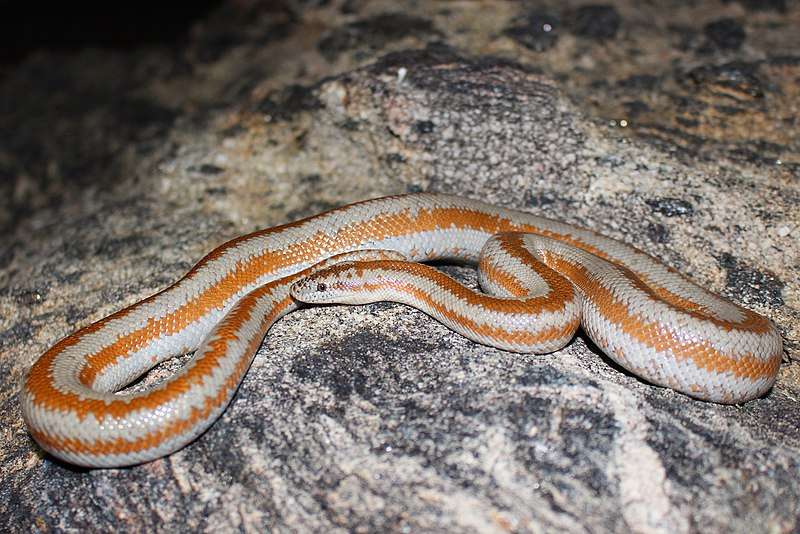
Description:
Scientific name: Lichanura trivirgata
Life span: 15-20 years
The circumference of a rosy boa, a thick-set snake, is comparable to that of a golf ball. Their bodies are slightly longer than their heads, which are elongated. They have a rather blunt tail that has some prehensile characteristics. It may thus grasp objects like fingers, rocks, and tree branches.
Coastal: generally rather dark with erratic or fuzzier orange lines over a background of cream or gray.
Desert: a light tan or gray backdrop with lateral stripes of dark maroon that are unbroken and clearly delineated.
Mexican: dark brown or black stripes on a yellow or cream background (includes San Matias Pass and Bay of Los Angeles).
Native Region/Habitat
Constrictor snakes known as rosy boas can be found in Southern California’s rugged shrublands, deserts, and national parks. The Colorado Desert, which is a portion of the Sonoran Desert, the Coachella and Imperial Valleys in California, and the southernmost tip of the Mojave Desert (in California, Nevada, and Arizona) are all places where rosy boas can be found.

Behavior:
Due to their calm personalities, these snakes make ideal pets. This is especially useful if you are a novice snake owner or if you have young children who are curious about handling snakes. Rosy boas typically utilize the surrounding temperature to gauge when to become active. They will be nocturnal throughout the summer months in hotter regions, meaning they will be active and hunt at night. They will become increasingly crepuscular as the seasons change, which means they are active and hunt at dawn and night.
Care As a pet/In captivity:
Adults are rarely aggressive and tolerate handled nicely. Young Rosy Boas may be a little wary of people and handling. Before handling them, you should give them at least two weeks to get used to their new enclosure.
- Around 10 gallons can be used for hatchling enclosures. Enclosures for adults may hold about 30 gallons. When your boa begins to develop, you must, however, expand their enclosure. Snakes that are adults should be 36 x 18 inches in size.
- During night, the temperature on the enclosure’s coldest side shouldn’t go below 75°F. An even heating gradient can be achieved and overnight temperatures can be maintained by using a heating pad. Put a heat source over the tanning area. Put a heat source over the tanning area.
- Because rosy boas are native to an extremely dry and arid environment, the humidity conditions in their enclosure should reflect this. 40% humidity is the ideal level.
- From hatchlings to adulthood, you can feed your snakes one rodent once a week. If you choose to do this, make the prey item somewhat larger than usual or feed your adult one and a half rodents every other week. The ideal prey to use is frozen. The mouse or rat can simply be placed in a hot water bath until it thaws to room temperature.
Table





